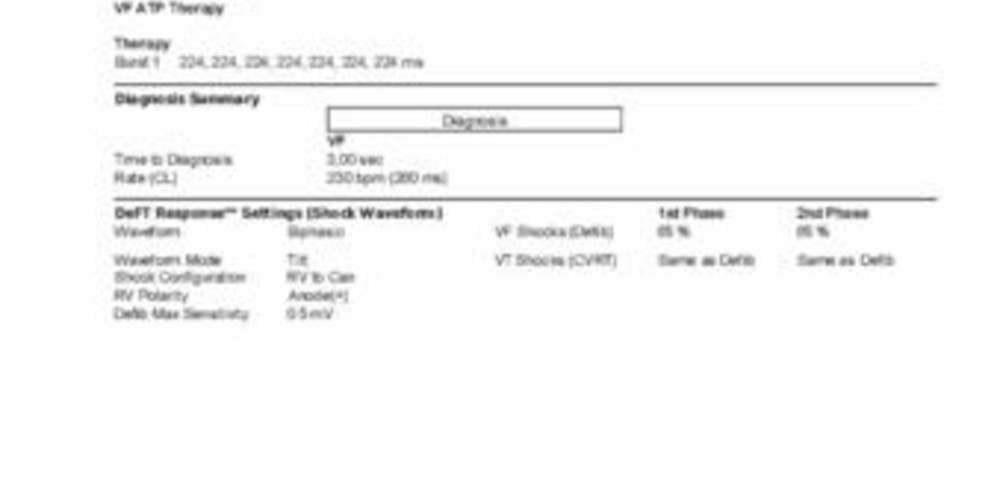SecureSense™ algorithm during a VF episode
Tracing
Manufacturer Abbott
Device ICD
Field Securesence
N° 5
Patient
This 80-year-old man presenting with an ischemic cardiomyopathy and a 35% left ventricular ejection fraction had undergone implantation of a Abbott Fortify Assura™ VR ICD. He was seen after an episode of syncope during which he received an electric shock; the SecureSense™ algorithm was programmed ON with a RV coil to can configuration; 2 zones of detection were programmed i.e. VF at 222 bpm (270 ms cycle length) and VT at 166 bpm (360 ms cycle length).

Graph and trace
- slow and irregular baseline rhythm consistent with AF and a slow ventricular response;
- premature ventricular contraction triggering an episode of fast ventricular arrhythmia;
- ventricular sensing with non-classified (-) cycle because of discordance between the instantaneous interval (short cycle consistent with the VF zone) and the average of 4 cycles (consistent with the sinus zone);
- second, short, F-classified cycle (concordance between instantaneous interval and the average of 4 cycles); after the detection of this second short cycle on the bipolar channel, activation of the noise counter on the discrimination channel (begins after an additional warm-up of 350 ms);
- T-classified cycle without VS2 marker on the discrimination channel despite a visually tall amplitude, because the signal fell in the warm-up phase;
- persistence of the ventricular arrhythmia; first VS2 cycle on the discrimination channel;
- signal sensed on the bipolar and not on the discrimination channel (intermittent undersensing on this channel);
- resumption of sensing on both channels;
- each short cycle on the bipolar channel increases the noise counter; however, this noise counter is reset to 0 after 2 short cycles on the discrimination channel (on this channel, a cycle is short if <360+30=390 ms);
- systematic resetting of the noise counter to 0 after 2 short cycles on the discrimination channel;
- the VF counter is filled (12); since the noise counter is <10, the therapies are not inhibited by the algorithm;
- ATP during the charge; 8 stimuli are delivered at a fixed rate while the capacitors are charging;
- unsuccessful ATP and continuation of fast, polymorphous VT;
- end of charge (36 J);
- electric shock delivered;
- 1-second post-shock blanking;
- successful electric shock and interruption of the tachycardia; it is noteworthy that, for this cycle, the discrimination channel oversenses, illustrating the limitations of this channel after the delivery of a shock (distortion of the signal), explaining the interruption of the algorithm after a first therapy;
- return to sinus rhythm diagnosed after 3 consecutive VS-classified cycles.
Other articles that may be of interest to you







This tracing illustrates characteristic aspects of the SecureSense™ algorithm function during a ventricular arrhythmia: